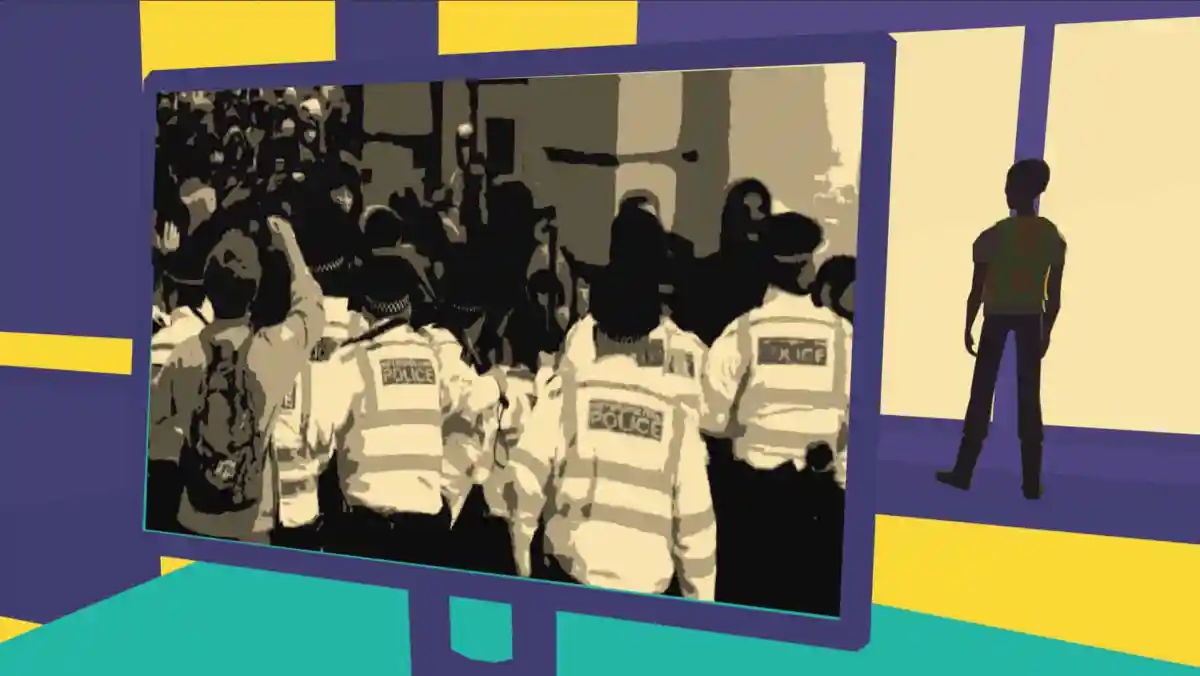Video games can be powerful vehicles in expressing uncomfortable ideas. No other art form can put you so fully in the shoes of another person, offering a human element to the terrible things in the news one might instinctively tune out. Papers, Please made players understand just how much a bureaucrat would risk if he let people illegally cross the border, and Valiant Hearts: The Great War showed the personal cost of a war that is often depicted as nothing but heroic. Developer Far Few Giants is exploring the politics of the imminent future with The Sacrifices, a series of short narrative games following the life of an illegal immigrant in the United Kingdom. The Change Architect is the free third game in the series, but each episode only loosely links to the next, so players can enjoy them in any order. Packing a whole lot of tension into 10 minutes of playtime, this is a narrative game where every choice counts.
It is the near future, and political tensions are boiling over. The high court is about to hand down a verdict for Baron Sugar, a politician accused of election fraud. While the evidence of his crimes is damning, a corrupt political system means there is a good chance he will be cleared of the charges. You are in charge of a peaceful protest, sending texts to a large crowd waiting restlessly for the verdict. The protestors are not alone, however. Plain-clothes police weave through their ranks, and the military is making an excessive show of force. Danger is closing in around the group fast, and only your choices can minimize the damage done to innocent citizens.
As with previous entries in the series, The Change Architect is a short piece of fiction laden with difficult choices. Do you order people to fend off the poorly disguised police from joining the crowd or save energies for future encounters? Call the bluff of a heavily armed military or smash through store windows to find cover? Follow your colleague into the street for some last-minute media coverage or only look out for yourself? Every call feels like the wrong one, and no choice is without repercussions.

I played through twice, making opposite decisions in each play though, and the state of the U.K. at the end of each run was quite different. Smaller aspects change with different choices, too: The refugee Adiar keeps watch through the window and reports back throughout the game, and how well you get to know him is also dictated by options chosen. As the ongoing lead character of The Sacrifices series, this is the first game where Adiar really gets a voice of his own. He is young but already battle-weary from the traumatic events he has experienced. Rather than retreating into himself, however, he projects his anger outwards, working to change the world for the better.
The story of The Change Architect is so compelling because it is worryingly plausible. It is easy to think of wars and corruption as things that happen to strangers in less fortunate countries, but the tangled mess of the recent U.S. election proves none of us are safe. Countries like Australia are stuck in a cycle of mediocre middle-ground politicians who are far more concerned with staying in power than running the country. Social media is carefully curated into echo chambers, which could be snatched away at any moment should too much dissent spread. Perception is everything, and the internet depicts the world through an incredibly warped lens. Between the growing discontent of the people and the brazen abuse of political power, the next time a riot breaks out, it could easily occur in your backyard.
The Change Architect has a minimalistic style that heightens the tension of the story. Planning such stressful actions from a bright, clinically clean office reflects the disconnect between issuing orders from a safe place and having those comments result in carnage. The low-poly faceless models add to the tense atmosphere, especially when you ask someone a difficult question and have no idea what they are thinking. A soundtrack of string instruments ratchets up in time with plot beats, getting faster as events escalate. Each element blends together beautifully, invoking a stressful atmosphere in less time than a lunch break.
A few small technical aspects could be addressed in future updates. The yellow text is often placed over a yellow background, making it hard to read. A drop shadow or thicker outline would aid in legibility. On my second playthrough, the musical cues were a bit out of sync — probably because I was clicking through the text faster than usual. A custom cursor would also be a nice addition: The generic Windows white pointer looked out of place next to the color-coordinated yellows and blues.
Far Few Giants has cornered the market of short-form, emotive storytelling. The Change Architect immediately envelopes you in its world, giving the player tough choices and tougher repercussions. Adiar’s journey is highly engaging, and I cannot wait for the next episode. For those who enjoyed the game, a few days are still left on a Kickstarter campaign to help fund the series.
Next week we will be playing Perfect Vermin, a first-person smash-’em-up with a creepy undertone. The game can be downloaded from Steam. If you’d like to share your thoughts, discussions are happening in the Discord server.
